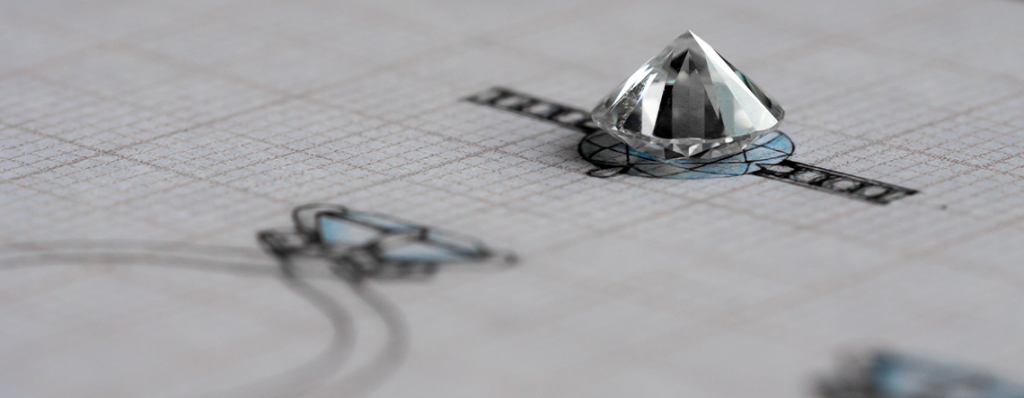If you’re dead set on the clear traditional look of the diamond but with a special quality to it, and without having to compromise on ethics, beauty, quality, or finances… then Moissanite might just be the stone for you!
This beautiful stone, famous for its exquisite sparkle has some unique qualities to it which you can read all about in our dedicated article.
1. MYTH: Moissanite is a fake diamond

FACT: Albeit visually similar, moissanite is neither a diamond nor a fake diamond and shouldn’t be thought as one; it’s just a completely unique, naturally occurring, or lab-grown stone.
The lustrous Moissanite is a beautiful and uniquely precious gemstone in its own right.
2. MYTH: Moissanites are created in the same way as diamonds

FACT: Unlike diamonds, moissanite is a gemstone that had its beginnings in the stars, when some 50,000 ago a meteorite crashed in Arizona, leaving a handful of crystal fragments in its wake. When in 1893, microscopic particles of this sparkly gem were first discovered in the crater by French scientist Henri Moissan, these radiant stones were mistaken for diamonds.
Chemically, moissanite (composed of Silicon Carbide) is absolutely different from a diamond; however, it is very similar in appearance and quality to a diamond. In fact, in terms of optics, a moissanite even out-performs a diamond!
3. MYTH: Moissanites are basically lab-grown diamonds

FACT: This is a common misconception since the majority of commercially available moissanites are man-made, similar to lab-grown diamonds. However, they have different chemical compositions and are valued independently of one another. The reason is that, with silicon carbide being scarcely found in nature anymore, natural moissanites are extremely rare.
Due to the gem’s scarce availability, its discoverer, Henri Moissan – who later won the Nobel Prize in Chemistry – focused his work later in life in trying to recreate this mesmerizing mineral. After many years of trial and error, the particles Moissan discovered were successfully synthesized to produce what is now one of the world’s most brilliant minerals, and in 1998 the gem was finally introduced to the jewelry market.
Interested in opting for a Moissanite engagement ring? Choosing to go with a non-traditional center stone shouldn’t mean having to compromise on quality, beauty, cost, or durability.
Discover the uncompromising qualities of the Moissanite.
Read Article

